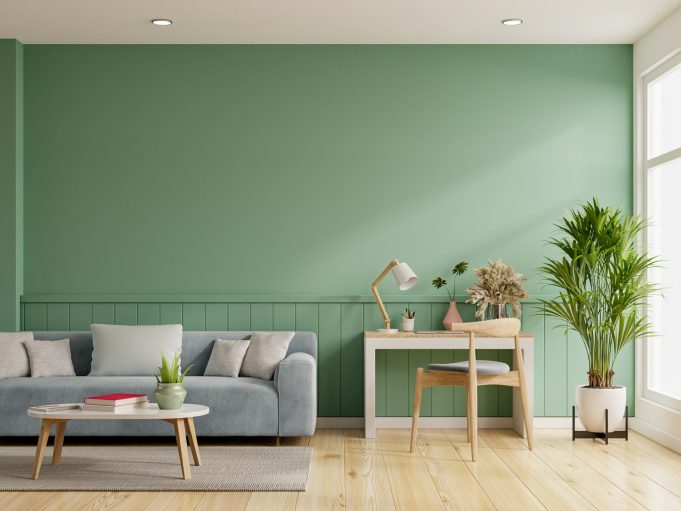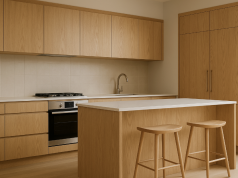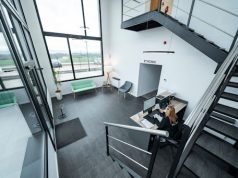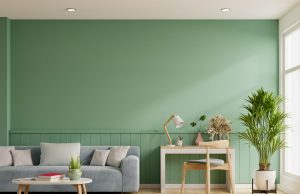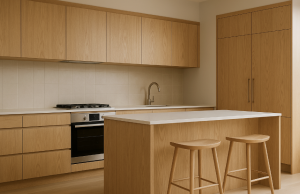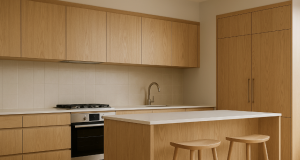The design of commercial spaces has been changed a lot in recent years, with an understanding being recognised that looks can influence employee wellbeing, customer thoughts, and even brand identity. Among the biggest design shifts, artificial green walls are being seen as practical answers that allow nature’s calming feel to be brought indoors—without the stress of caring for real plants. A well-made Plant wall is being used to create strong visual impact while also handling concerns about maintenance, lifespan, and steady appearance. No surprise it’s becoming popular in offices, retail shops, hotels, and even healthcare places.
Why Artificial Green Walls Are Being Chosen by Businesses
Even though real plant installations offer great benefits, many difficulties are being faced in commercial areas. Lighting that changes, AC systems, watering routines, and ongoing costs are being viewed as big complications. Artificial alternatives, however, are being trusted to give the same green and calming effect—without the trouble. Pretty convenient, right?
Amazingly, the visual effect is still extremely realistic. Modern artificial leaves and foliage have been improved so much that people often can’t tell them apart from real ones. Natural colours, believable textures, varied leaf shapes, and thoughtful plant mixes are being used. From across the room, observers usually think everything is real—kind of surprising, isn’t it?
Key Benefits for Commercial Places
Consistent Look All Year
Seasonal changes, pests, and random growth patterns are experienced by living walls, but artificial installations keep their perfect look all the time. This steady appearance is valued by businesses that care about their brand image. Hotels, flagship stores, and corporate offices are benefited by this predictability during photoshoots, client visits, or important meetings.
Low Maintenance Needs
The advantage of low upkeep cannot be overstated. Artificial green walls only need dusting once in a while or a light clean—maybe every few months. No watering, trimming, fertilising, or special plant care has to be done. Expenses go down, and the stress goes down too.
Great for Hard-to-Design Locations
Artificial walls work perfectly in places where real plants simply fail. Basements, hallways with no windows, heavily air-conditioned shops, and dark meeting rooms can easily host greenery. Biophilic design can now be added anywhere—why limit yourself to just sunny corners?
Design Uses Across Different Industries
Corporate Workplaces
Modern offices are increasingly built around the idea that staff wellbeing affects performance, hiring, and retention. Green walls at entrances are used to impress visitors and show the company’s care for environment and people. Inside open spaces, installations are being placed to give visual rest from screens and hard surfaces—very helpful for focus.
Feature walls near receptions, breakout zones, and conference entrances are remembered easily and help offices stand out. Even though artificial, the biophilic effect still supports a healthy work culture.
Retail and Hospitality
Customer-facing businesses are using green walls to create photo-friendly spaces that people love sharing online. Cafes and restaurants use lush walls for cosy vibes that even justify higher pricing. Retail stores soften their interiors with greenery to make shopping more enjoyable.
Hotels and spas especially benefit from the calm, spa-like feeling that greenery brings. Lobbies, corridors, and relaxation rooms feel more luxurious and welcoming.
Healthcare and Wellness
Medical spaces usually feel sterile and cold, which can increase anxiety. Artificial green walls are being added to waiting rooms, treatment rooms, and hallways to reduce stress—without allergens, soil, or plant mess. The psychological comfort of nature proves very valuable here.
Installation and Customisation Choices
Modular Panel Systems
Most commercial artificial green walls are installed using modular panels that fit easily onto existing walls. These panels—often around 50cm x 50cm—allow flexible design, simple installation, and easy replacement if something gets damaged.
Custom Arrangements
High-quality suppliers offer personalised designs. Leaf types, colours, patterns, and density can all be chosen based on your space. Some businesses even get brand logos or patterns created using different foliage—cool, right?
Portable and Freestanding Options
Permanent installation isn’t always required. Freestanding greenery structures give flexibility for events, rented offices, or spaces that change layout often.
Quality Factors to Think About
Material Quality & UV Protection
Good artificial plants use UV-resistant materials so they don’t fade or become brittle. This is important for areas near windows or bright lights. Cheap materials age quickly, so checking UV stability is important.
Fire Safety Standards
Commercial buildings must meet strict safety rules. Trusted suppliers provide fire-rated products, so it’s important to check they meet British Standards.
Realistic Appearance
Quality levels vary a lot. It is better to check samples in person. Look for natural colours, mixed leaf shapes, and realistic texture. The best installations avoid the repeating patterns that fake-looking products usually have.
FAQ
How long do artificial green walls last?
Good installations usually stay in great condition for 7–10 years or more. UV-protected materials reduce fading, and gentle cleaning keeps them looking fresh.
What maintenance is needed?
Only light dusting every few months is needed. A deeper clean once or twice a year with mild soap keeps foliage bright. No watering or plant care needed.
Can they be used outside?
Some UV-resistant products can be used in sheltered outdoor areas. But full weather exposure reduces lifespan. For fully outdoor walls, real plants still perform better long-term.
How much do they cost?
Prices usually start from £150 to £400 per square metre for good systems. Custom designs cost more. However, compared to real living walls, artificial ones are often cheaper across 5–10 years.
Do they give the same benefits as real plants?
They don’t clean the air like real plants. But visually, they still provide strong psychological and aesthetic benefits by connecting people with nature.
Conclusion
Artificial green walls are being seen as smart solutions for businesses wanting natural beauty without daily plant care. Their steady appearance, low maintenance, flexible installation, and long-lasting quality make them excellent for many commercial environments. Even though they don’t replace every benefit of real plants, they deliver strong visual and emotional impact. For businesses that need both beauty and practicality, quality artificial installations provide the best of both worlds—bringing natural calm indoors while respecting real-life commercial needs.

